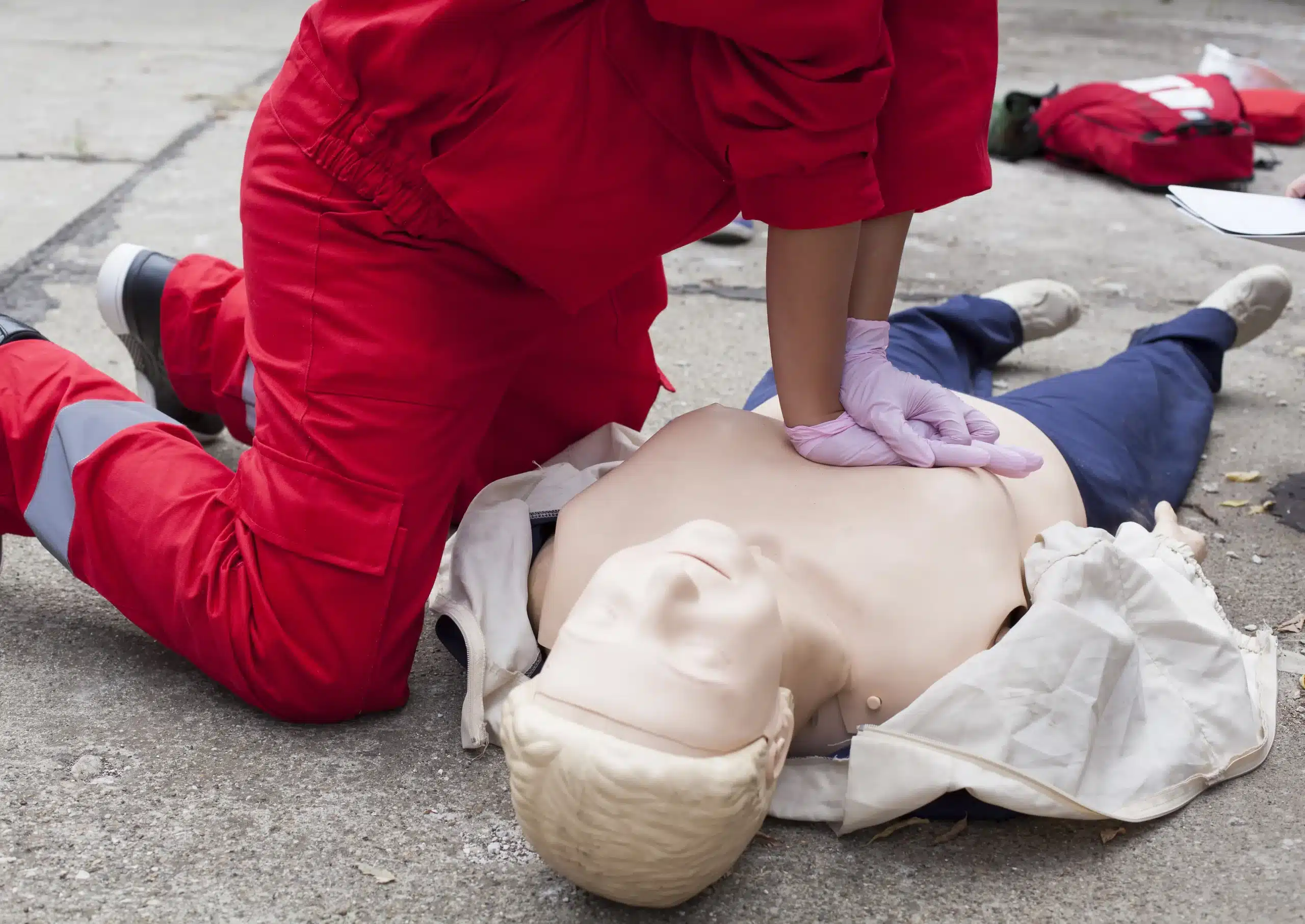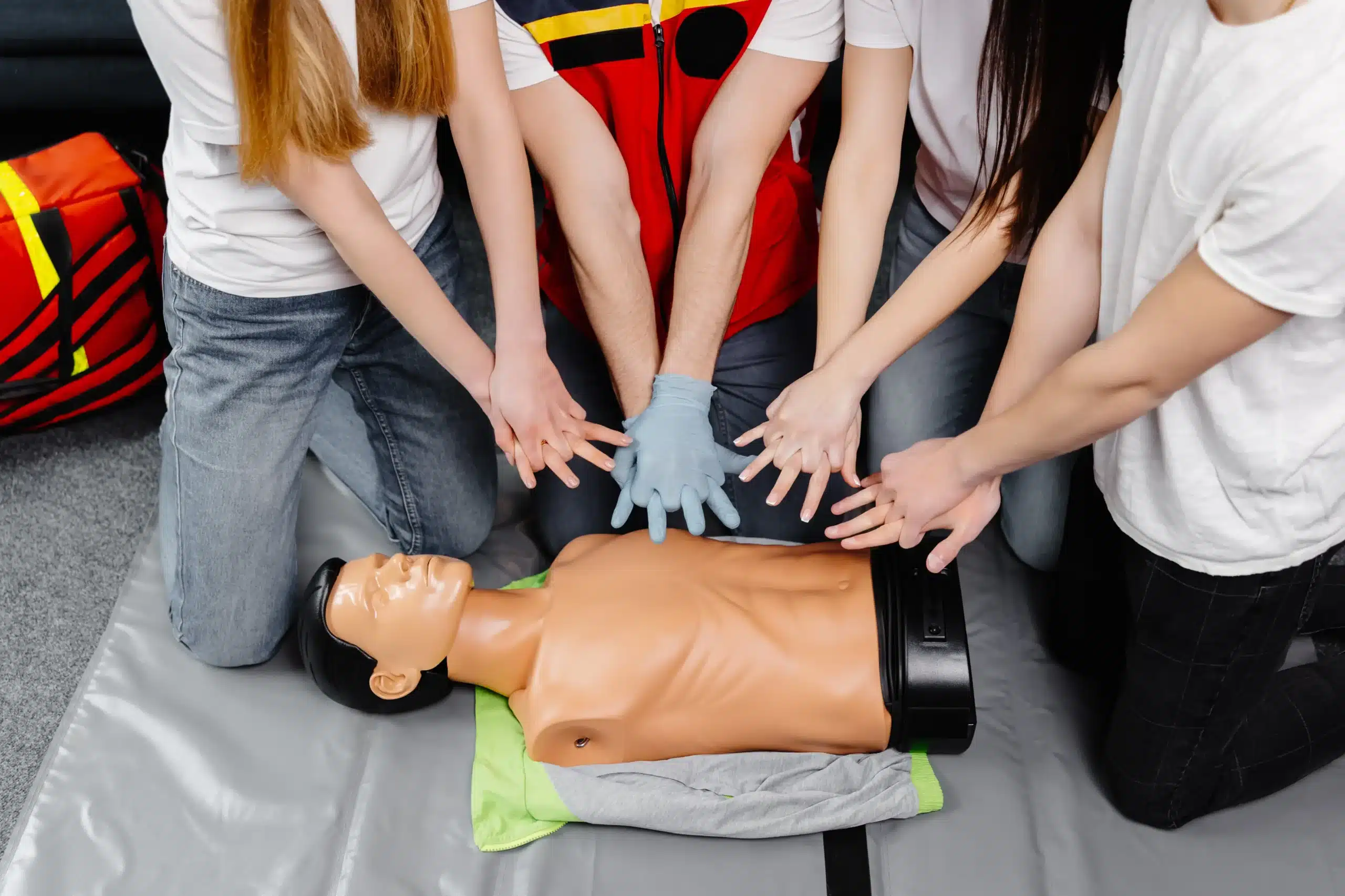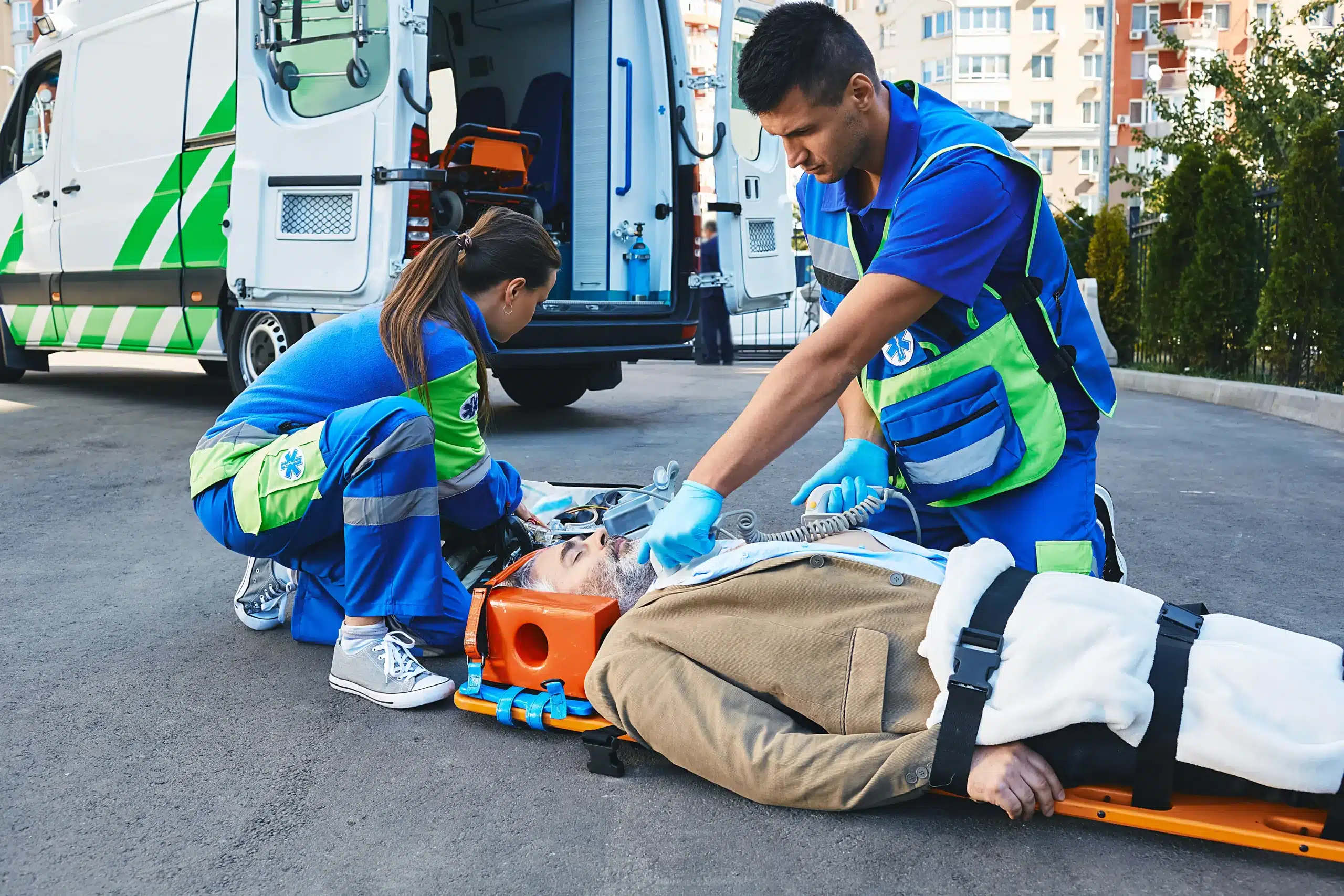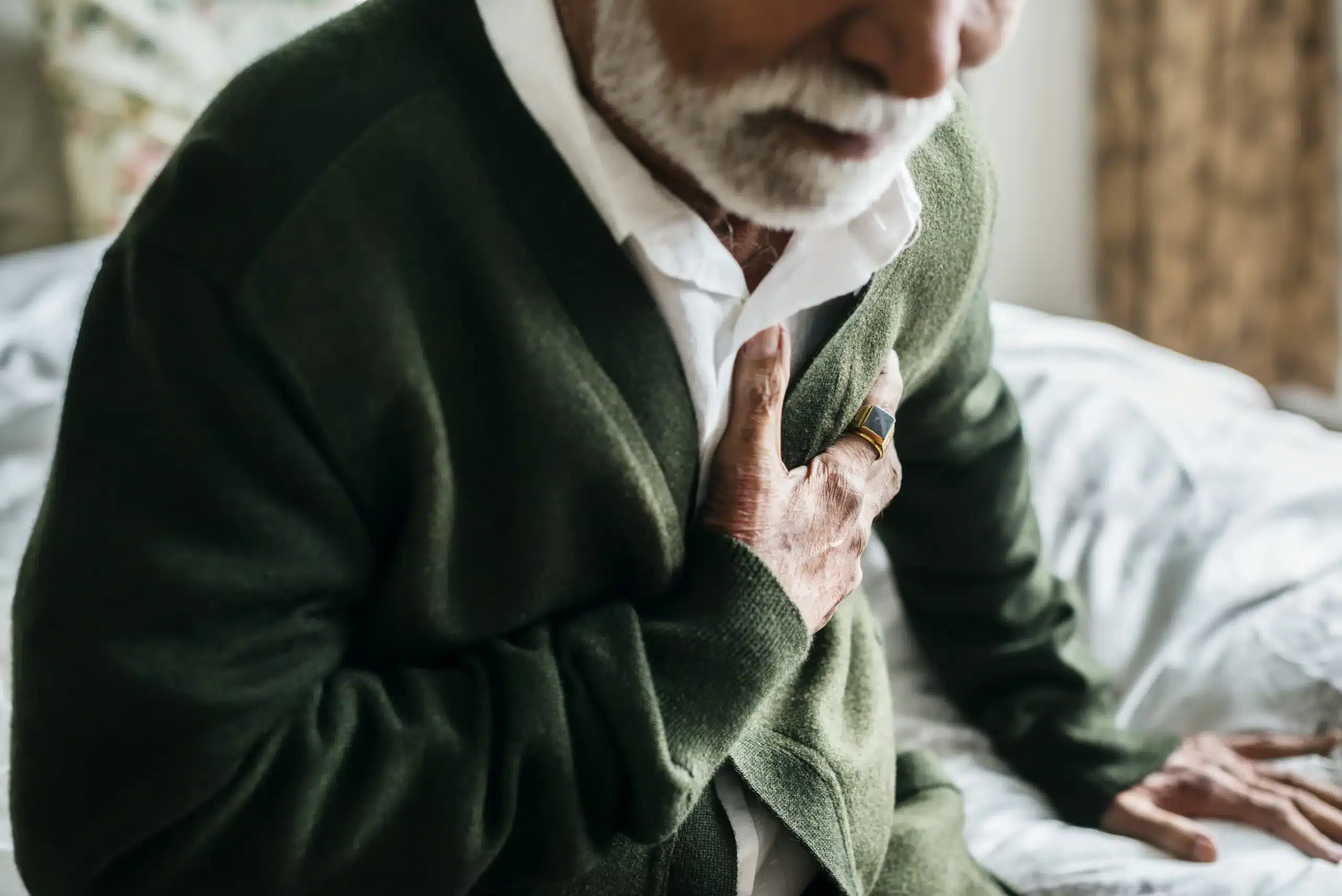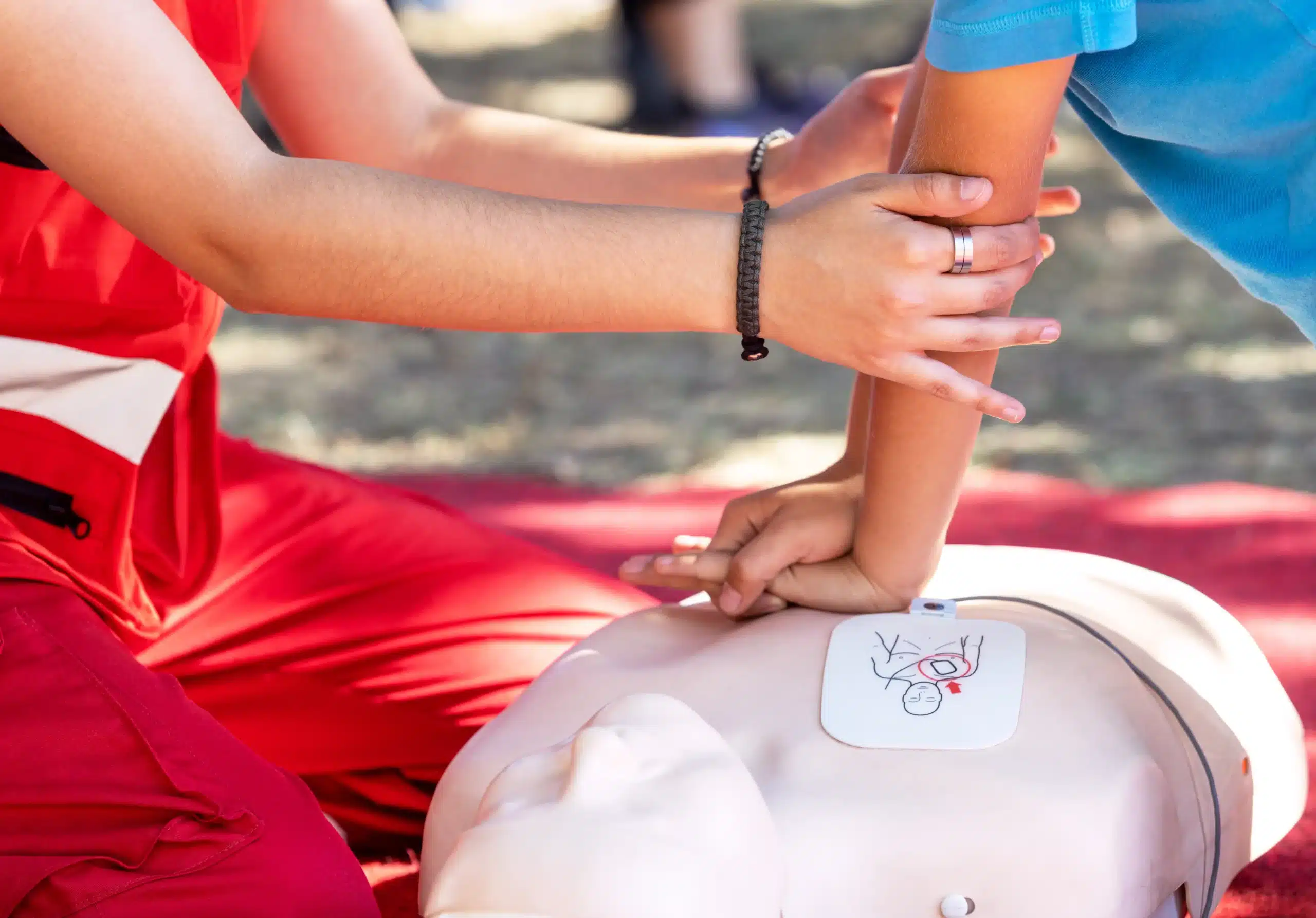In a medical emergency, every second counts. Basic Life Support (BLS) training gives you the skills to respond quickly and effectively, providing crucial care until professional help arrives. This guide is your resource for finding and preparing for American Heart Association BLS courses near me in Tracy. We’ll explore the importance of BLS, what the training entails, where to find courses in Tracy, and how to maintain your certification. Whether you’re a healthcare professional or simply want to be prepared, this guide will help you take the first step towards becoming a life-saver.
Key Takeaways
- BLS certification empowers you to act in emergencies: Learn CPR, AED use, and other vital skills to respond effectively to life-threatening situations.
- Select a quality BLS course: Prioritize AHA-certified training centers with experienced instructors, current guidelines, and convenient schedules.
- Stay prepared by maintaining your BLS skills: Regular practice and two-year renewal ensure you’re always ready to provide critical care when needed.
What is BLS? Why is it Important?
BLS, or Basic Life Support, equips individuals with the skills to respond to life-threatening emergencies. It’s the foundation for saving lives and providing crucial care until professional medical help arrives. Understanding BLS and its importance can empower you to make a real difference.
Learn Life-Saving Skills
BLS certification goes beyond standard CPR. While covering CPR techniques for adults, children, and infants, it also encompasses other crucial skills. You’ll learn how to use an automated external defibrillator (AED), a portable device that can help restart a heart. BLS training also covers recognizing the signs of a heart attack and stroke, providing first aid, and relieving choking. These comprehensive skills make BLS invaluable for anyone. Knowing these techniques can give you the confidence to act quickly and effectively in an emergency.
Recognize Cardiac Arrest & Activate Emergency Response
A core component of BLS is recognizing the signs of cardiac arrest. This involves understanding the difference between a heart attack (blocked blood flow) and cardiac arrest (the heart malfunctions and stops). BLS training from Tracy CPR Classes teaches you how to quickly assess a situation, check for responsiveness and breathing, and immediately call 911. Early recognition and activation of emergency services are critical for improving survival rates. Our courses adhere to the 2015 American Heart Association (AHA) Guidelines, using high-fidelity manikins, simulations, and feedback devices for realistic training. This hands-on approach helps you develop the muscle memory and confidence to perform BLS skills accurately under pressure.
Key Features of AHA BLS Courses
High-Quality CPR for Adults, Children, and Infants
Basic Life Support (BLS) is more than just CPR. It includes CPR techniques for adults, children, and infants, plus training on how to use an automated external defibrillator (AED). This device can help restart a heart in a cardiac emergency. AHA BLS courses cover high-quality CPR techniques, providing you with the skills to respond effectively in various situations. Knowing how to perform CPR is a crucial part of BLS training. The course will prepare you to confidently handle emergencies involving people of all ages.
AED Training and Use
BLS certification includes training on how to use an AED, critical for responding to cardiac emergencies. You’ll learn to assess the situation, safely use the AED, and integrate it with other CPR techniques. AED training equips you with the knowledge and confidence to use this life-saving device. This hands-on training will prepare you to act quickly and decisively in a crisis.
Bag-Valve Mask Ventilation
The BLS course covers using a bag-valve mask for ventilation, an essential skill for providing effective rescue breaths during CPR. You’ll learn how to position the mask, maintain an airtight seal, and deliver the correct volume of air. Mastering bag-valve mask ventilation ensures adequate oxygen delivery during resuscitation. This skill is essential for maintaining a patient’s airway and providing critical oxygen until professional help arrives.
Team Dynamics and Resuscitation
Effective team dynamics are emphasized in BLS training, as teamwork is critical in high-stress emergency situations. You’ll learn how to communicate effectively with team members, coordinate roles, and ensure smooth transitions during resuscitation. Understanding team dynamics improves the efficiency and effectiveness of resuscitation efforts, ultimately leading to better patient outcomes. This aspect of the training prepares you to work effectively as part of a team, which is often crucial in real-world emergencies.
Find BLS Courses in Tracy
If you’re searching for “BLS classes near me,” look no further. Several excellent providers offer BLS certification in Tracy, CA. Here are a few options to explore:
Tracy CPR Classes: Your Local AHA Training Center
Tracy CPR Classes offers convenient, in-person BLS training right here in Tracy. As an authorized American Heart Association (AHA) Training Center, they provide various options to fit your schedule, including blended learning courses that combine online learning with in-person skills sessions. They also offer a full suite of AHA certifications, including CPR, ACLS, PALS, and First Aid.
Safety Training Seminars: Flexible Scheduling
Safety Training Seminars, a woman-owned AHA Training Center, prioritizes high-quality instruction and flexible scheduling. They offer AHA BLS certification courses, along with ACLS, PALS, CPR, and First Aid, seven days a week. This makes it easier to find a class that fits your busy schedule.
American Heart Care CPR: Bilingual Courses
American Heart Care CPR provides BLS/CPR certification classes in Tracy with a focus on hands-on learning. Experienced instructors with real-world expertise guide students through the course content. Classes are offered in both English and Spanish, making their training accessible to a broader audience.
BLS Certification: Cost & Value
Getting your BLS certification is an investment in your skills and ability to help in a crisis. It’s helpful to understand how pricing works and what your certification includes.
Standard Pricing and Inclusions
BLS certification typically costs between $75 and $120, depending on the training center and course format. Tracy CPR Classes offers a comprehensive BLS course for $120, which includes online learning, the in-person skills test, and your official AHA BLS certification card. This covers everything you need to get certified.
Group Discounts and Special Offers
If you’re coordinating training for a group, ask training centers about discounts. Many providers, including American Heart Care CPR, offer reduced rates for group BLS certification, making it more affordable to train your team. This can be a smart option for businesses, schools, or community organizations.
Nationwide Recognition & 2-Year Validity
Your American Heart Association BLS certification is valid for two years and recognized across the United States. This national standard ensures your skills meet current guidelines, giving you and your employer confidence in your qualifications. The two-year certification period also encourages regular renewal to keep your skills sharp.
What to Expect in a BLS Course
BLS courses follow a structured approach to ensure you gain both theoretical knowledge and practical skills. Here’s a breakdown of what you can typically expect:
Course Structure: Online & In-Person Skills Test
Many BLS courses now utilize a blended learning format. This often involves completing an online portion before attending an in-person skills session. This allows you to learn the fundamental concepts and procedures at your own pace, fitting the training around your schedule. The in-person portion focuses on demonstrating your proficiency in essential BLS techniques.
Hands-on Practice with Expert Instructors
The core of BLS training lies in hands-on practice. You’ll work with expert instructors who guide you through realistic scenarios, providing feedback and ensuring you master the necessary skills. This includes chest compressions, rescue breaths, using an AED, and other critical procedures. This interactive approach helps build your confidence and prepares you to respond effectively in real-life emergencies. Studies show how valuable instructor feedback is to mastering these techniques.
Written Exam and Skills Assessment
To earn your BLS certification, you’ll need to demonstrate your understanding of the material and your ability to perform the skills correctly. This typically involves a written exam covering the key concepts of BLS. You’ll also undergo a skills assessment where you’ll perform the learned techniques in front of an instructor. This evaluation ensures you’ve retained the knowledge and can apply it effectively, giving you confidence in your abilities. Research shows that this immediate feedback significantly improves skill retention.
Who Should Get BLS Training?
BLS training isn’t just for doctors and nurses—it’s a valuable skill set for anyone who wants to be prepared for an emergency. Knowing how to perform CPR and other life-saving techniques can make a real difference. Let’s look at some professions that benefit most from BLS training.
Healthcare Professionals & Medical Students
For those working in healthcare, BLS certification is often a job requirement. It demonstrates a commitment to patient safety and provides the essential skills needed to respond to cardiac arrest and other emergencies. Many healthcare employers look for BLS certification from a trusted source like the American Heart Association. Medical students also find BLS training beneficial, giving them a strong foundation for their future medical careers.
First Responders & Public Safety
Police officers, firefighters, EMTs, and other first responders are on the front lines of emergencies. BLS certification equips them with the advanced skills to provide immediate care in critical situations. Beyond the core techniques of CPR, BLS training covers topics like airway management and using automated external defibrillators (AEDs).
Educators, Coaches, and Childcare Providers
Teachers, coaches, camp counselors, and childcare providers work with children and young adults, making BLS training especially relevant. In these settings, emergencies can happen unexpectedly, and having trained professionals on hand is crucial. BLS classes empower these individuals to respond confidently and effectively, creating a safer environment. Learning BLS also fosters community preparedness, ensuring more people are equipped to handle emergencies.
Prepare for Your BLS Course
Getting ready for your BLS course involves a few simple steps. Planning ahead ensures you’ll walk into class feeling confident and prepared to learn life-saving skills.
Pre-Course Materials & Study Tips
Your BLS provider, such as Tracy CPR Classes, will likely give you access to course materials beforehand. Take some time to review the BLS course handbook and any online resources. Even a little prep work can significantly impact how quickly you absorb the information during the course. Familiarizing yourself with the basics will allow you to focus on mastering the practical skills during your in-person training. Studies show that practicing BLS skills00716-7/fulltext) before class improves both learning and retention, leading to better outcomes in real-life emergencies.
What to Bring and Wear
Comfort is key during your BLS course. You’ll be moving around quite a bit while practicing skills like CPR and using an AED, so wear comfortable clothing that allows for a full range of motion. Bring a notebook and pen to jot down notes, though most courses provide materials. A water bottle is also a good idea to stay hydrated, especially during longer sessions.
Payment & Registration
BLS course fees typically range from $75 to $120, depending on the training center and location. Tracy CPR Classes offers various payment options, often including cash, check, or electronic payments. Registering is usually straightforward. Many training centers allow you to register online, which makes it easy to find a class time that fits your schedule. Contact the training center directly if you have any questions about registration or payment.
Maintain Your BLS Certification
Renewal Process
Your BLS certification, like most healthcare certifications, requires renewal every two years. This keeps your skills sharp and ensures you’re up-to-date on the latest American Heart Association guidelines and best practices for CPR. These guidelines are important not only for providing effective care, but also for successfully completing the renewal process, which includes a written exam and skills test. You’ll need to score at least 84% on the exam to pass and receive your updated certification. For more details on BLS certification, take a look at this resource.
Continuing Education
While your BLS certification is valid for two years, consistent practice and continuing education are essential for confidently performing CPR in a real emergency. Like any skill, the more you practice, the more proficient you become. Studies show that skills retention can decline over time, suggesting that annual BLS training, including AED practice, is beneficial. The World Health Organization also highlights the importance of ongoing training in their “Kids save lives” statement, recommending two hours of annual BLS and AED training for everyone starting at age 12. Regular refresher courses help bridge the gap between certification and real-world application, ensuring you’re always prepared. To learn more about maintaining BLS skills, check out this research00716-7/fulltext) and this helpful article.
BLS Course Benefits & Experiences
Choosing the right BLS course can significantly impact your learning experience and preparedness for real-life emergencies. Here’s what sets a high-quality BLS course apart:
Expert Instruction
Expert instructors bring years of practical experience to the classroom, offering valuable insights and demonstrating proper techniques. This hands-on approach, combined with personalized feedback, ensures you gain the confidence and skills to perform BLS effectively in a real emergency. Look for courses that highlight the instructors’ real-world experience, like those offered at Tracy CPR Classes. This practical training gives you the tools you need to respond confidently.
Up-to-Date Guidelines & Best Practices
The medical field is constantly evolving. A high-quality BLS course adheres to the latest guidelines from organizations like the American Heart Association (AHA). This ensures you’re learning the most current and effective life-saving techniques. Tracy CPR Classes stays updated with these guidelines, so you can trust you’re receiving the best possible training. Check if the course curriculum is based on the latest AHA guidelines, a key feature of reputable providers like American Heart Care CPR.
Flexible Scheduling
Balancing work, family, and other commitments can make it tough to fit in extra training. Look for BLS courses with flexible scheduling options, including evening and weekend classes. Safety Training Seminars, for example, offers a variety of scheduling options to accommodate different needs. This adaptability makes it easier to find a course that works with your busy lifestyle. Tracy CPR Classes also understands the importance of flexibility and works to provide convenient scheduling options.
Choose the Right BLS Provider in Tracy
Finding the right BLS provider is crucial for receiving high-quality training that equips you with the skills to confidently respond to medical emergencies. With several options available in Tracy, consider these key factors before making your decision.
Factors to Consider
BLS certification provides you with advanced life-saving skills—essential for healthcare professionals and anyone seeking comprehensive training. Look for a provider that aligns with your learning style and offers American Heart Association-certified courses. In-person BLS classes, like those offered by Tracy CPR Classes, offer hands-on learning guided by a certified instructor, invaluable for mastering these critical skills. Studies show that simply reading about BLS isn’t enough; retention of BLS skills00716-7/fulltext) is much higher with effective, hands-on training. This practical experience can make all the difference in a real-life emergency. Consider your schedule and choose a provider offering convenient class times and locations.
Compare Courses & Schedules
Take the time to compare courses and schedules from different providers in the area. Safety Training Seminars offers AHA-certified CPR, BLS, ACLS, PALS, and First Aid classes and are open daily from 8 am to 10 pm, providing flexibility for busy schedules. Check if providers offer courses in multiple languages. Bilingual courses can be a significant advantage for those more comfortable learning in a language other than English. Finally, look for providers with user-friendly online registration systems. Being able to easily filter by location and course type streamlines the process of finding a class that fits your needs. The right BLS provider will offer not only quality instruction but also a convenient and accessible learning experience.
Related Articles
- BLS Certification in Tracy: Your Comprehensive Guide – Tracy CPR Classes
- Get BLS Certified in Stockton: Top Training – Tracy CPR Classes
- BLS HeartCode in Tracy: Blended Learning CPR – Tracy CPR Classes
- BLS Classes in Lodi: Your Complete Guide – Tracy CPR Classes
- AHA BLS Certification in Tracy: Your Complete Guide – Tracy CPR Classes
Frequently Asked Questions
What’s the difference between BLS and CPR? CPR is a specific technique used during BLS. BLS encompasses a broader range of skills, including CPR, AED use, and recognizing the signs of cardiac arrest and stroke. Think of CPR as one tool within the larger BLS toolkit.
How long is my BLS certification valid? American Heart Association BLS certifications are valid for two years. It’s important to renew your certification before it expires to maintain your skills and stay up-to-date with the latest guidelines.
What if I have questions during the course? BLS instructors are there to guide you. Don’t hesitate to ask questions during the course. They are experienced professionals and happy to clarify any doubts you may have. The goal is for you to feel confident in your abilities.
Is there an online-only option for BLS certification? While some portions of the course may be online, BLS certification requires an in-person skills assessment. This hands-on component is essential for mastering the techniques and ensuring you can perform them correctly in a real-life situation.
How do I choose the right BLS provider? Consider factors like instructor experience, adherence to the latest AHA guidelines, course schedule flexibility, and overall cost. Reading reviews and comparing different providers can help you make an informed decision. Look for a provider that offers a comfortable learning environment and emphasizes hands-on practice.
